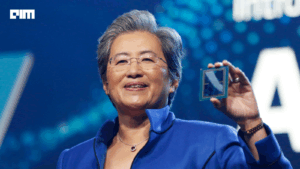Commercial insurance remains one of the most complex operational environments in financial services. Broker workflows still depend on carrier portals, PDFs, and manual data entry. Policies differ across carriers with no consistent structure, many systems lack APIs, and accuracy requirements leave little room for error.
These conditions have made meaningful automation difficult without requiring carriers or agencies to change how they operate. In the past few years, more vendors have begun building tools to automate the most repetitive steps in these workflows.
Pyq, a San Francisco-based startup backed by Y Combinator and WillowTree Ventures, is one of them. The company released its platform, Mulligan, in late October and says more than 50 brokerages use it. Mulligan automates quoting, policy analysis, commissions, submissions, and proposals through an AI-driven system.
“AI should handle the paperwork, not the people,” CEO Aman Raghuvanshi said to AIM Media House.
Building an AI system around broker workflows
Pyq began inside Y Combinator shortly after ChatGPT was released. The team built a general-purpose document comparison tool at a time when model capabilities were still developing.
“We built a solution that compared any two documents to figure out the substantial differences between them,” Raghuvanshi said.
The company released the tool publicly to observe usage patterns. “Commercial P&C brokers found us and they started using us to compare insurance policies and quotes,” he said.
Policy review is a time-consuming workflow across the industry. Pyq says agencies using Mulligan’s policy module save more than eight hours per week and reduce review errors by up to 95%, according to the company’s published metrics.
“They were pretty sticky. They were using it frequently, and they were also willing to pay a lot more than we thought,” Raghuvanshi said.
Those early users highlighted other operational gaps. As Pyq gathered more feedback, it expanded into commissions, proposals, quoting, and submissions.
Pyq describes itself as AI-native. “We’re AI-native. We didn’t have anything before these models,” Raghuvanshi said. The team used open-source models in 2023 because commercial APIs were not yet widely available. “All of 2023 we were using open-source models,” he said. The company began using commercial models in 2024 as performance improved.
Mulligan uses browser agents, vision-language models, and document-understanding systems to automate steps that previously required manual review, according to the company. The company says the quoting module automates 70-90% of the workflow for commercial lines, and that agencies can generate quotes in minutes instead of hours. On the commissions side, the company says the system processes statements in under two minutes, even when carriers use nonstandard formats. For submissions, the company says Mulligan reduces turnaround times by up to 75% compared to manual assembly.
Pyq says Mulligan can also sync extracted data with agency management systems including Applied, EZLynx, AMS360, and Veruna.
The product is offered through a self-serve, credit-based model with plans ranging from a free tier to enterprise.
The challenges of automating a high-trust industry
Commercial insurance has resisted automation for structural reasons. Policy documents differ across carriers. Forms are not consistently aligned with ACORD standards. State regulations vary. Carrier portals typically require manual input. Many brokerages rely on legacy agency management systems that are difficult to integrate with.
Accuracy requirements are also high. “If it’s less than 99%, chances are it’s worth the investment to use humans, because a mistake can cost a lot of money,” Raghuvanshi said.
Privacy and deployment needs vary across agencies. “Our larger customers will want a full on-prem deployment, which you cannot do using an OpenAI or others,” he said. Raghuvanshi added that many earlier insurtech attempts ran into this issue. “Many insurtechs use an off-the-shelf LLM under the hood, and the moment a high-security customer comes along, there are a lot of problems.”
Standardization remains a challenge. Pyq relies on model interpretation rather than strict format consistency. “Modern AI models don’t need standardization as such,” he said. “They can intuit that ‘uninsured motorist deductible’ and ‘UIM’ refer to the same thing.”
Despite broader automation, human involvement remains necessary. “We don’t want to eliminate humans from the process,” Raghuvanshi says. “Brokerages are sales organizations. Humans sell the policies and service the customer.”
Raghuvanshi says automation often shifts staff toward client-facing work. “People don’t get fired because quoting became automated; they get repurposed into more human-facing tasks.”
Most automation products in the industry address single workflows such as quoting, submissions, or commissions. Pyq positions Mulligan as a system that connects these workflows, according to the company.
The platform is also SOC 2 Type II compliant, according to the company.
Industry consultancies have identified broker modernization as a priority for 2025-26 as consolidation and digital operations investment increase.
Raghuvanshi describes Pyq’s roadmap as an exercise in anticipating model improvements. “You don’t build for what models can do today. You pick a problem they can’t solve yet and build around it until they can,” he said.
He says much of his focus is on identifying capability shifts in model modalities and translating them into enterprise workflows. “A lot of my job is spent trying to figure out where the puck is going rather than where it is today.”
AI models can now reliably handle the document-heavy workflows that have long slowed broker operations. Pyq frames its approach around removing manual processing while leaving client-facing judgment to brokers, a separation the company considers necessary for adoption in a high-trust industry.











